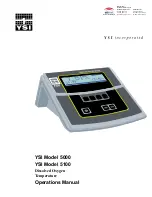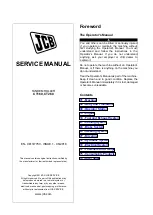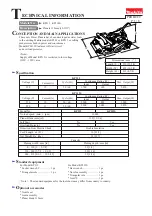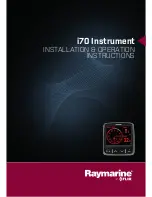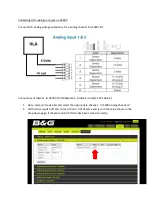
Superabrasive
Owner’s Manual Original Language – Lavina
®
V25G-X
08/2019
10
for propane powered engines used outdoors, but
CARB/EPA approval does not signify that the engine
is safe to use indoors.
CGA
The Canadian Gas Association (CGA) has set a limit
of 1500 ppm CO in exhaust flow.
OSHA
For propane powered machines used indoors, the
Occupational
Health
and
Safety Administration
(OSHA) has established a limit of 50 ppm CO for 8
hour time weighted average (TWA) in ambient air and
is considering a limit of 800 ppm CO in exhaust flow.
DOT
The
Department of Transportation (DOT)
has
established regulations regarding the safety of fuel
cylinders including the ones used on propane powered
floor care machines.
Local Agencies
Local law enforcement agencies such as the local Fire
Marshall also rely on independent testing labs such as
UL and CGA before giving their approval of the use of
some equipment. These labs thoroughly test equipment
and submit their stamp of approval only after rigorous
testing. While not being required by all law enforcement
agencies, the stamp of approval by these agencies
further assures the operator that he or she is working
with and around safe equipment.
NOTE
: In order to reduce all consequences of the
above mentioned risks, we advise that machine
operators will follow the instructions in the manual at all
times.
PROPANE CYLINDERS
The Propane cylinders are constructed of either
aluminum or steel. We recommend aluminum
because it is lighter and guards against rusting.
The cylinder used on propane powered floor
machines is classified as a 4E240 cylinder. Its
rated capacity is 20 lbs. and this designation
refers to the model of the cylinder. Actual propane
capacity achieved during filling can be less than,
equal to, or slightly more than 20 lbs. Use only
UL, CTC/DOT listed cylinders.
The propane cylinder used on the machine is a
motor fuel cylinder as listed by the Department of
Transportation. Unlike the common 20-lb propane
outdoor grill cylinders (which are not legal for use
on propane floor machines), the motor fuel cylinder
has a number of safety systems designed into it to
ensure your safety at all times.
There are two types of 20 lb. motor fuel cylinders.
Liquid draw
Vapor draw
The liquid draw cylinder is used on larger
vehicles like forklifts. These machines have
special vaporizing carburetors to allow the
propane to change from a liquid to a gas before
being burned in the combustion chamber.
The vapor draw cylinder is used on small
machines like the propane powered floor care
machines. The vacuum generated by the engine
draws up the Propane gas vapor through the fuel
system. The propane powered floor care machine
does not have an evaporating system and will
freeze up if liquid propane is introduced to it. It is
necessary that special attention be paid to ensure
that neither the liquid nor the vapor draw cylinders
be overfilled.
REFUELLING CYLINDERS
The proper filling of propane cylinders is a subject
so important that it warrants special attention.
Propane cylinders should only be filled by qualified
propane dealers.
Most important, propane cylinders should be filled
nomore than 80% of their rated capacity. The other
20%,
which is about 4” (10 cm) from the top of the
cylinder, is called the vapor space or headspace. This
vapor can be compressed without causing the pressure
relief valve to open and vent gas to the area around the
cylinder. If there is no headspace to allow for fuel
expansion, the pressure relief valve will open, releasing
propane gas into the atmosphere. This is a very
dangerous and volatile situation as there is always the
possibility that enough of the vented gas could find its
way down to the floor and come in contact with a pilot
light from a furnace, hot water heater, or other source of
ignition.
Propane changes into a gas, is -44
o
F (-42
o
C).
Exposing unprotected skin to propane gas or liquid
could result in frostbite injury.
All new cylinders should be vented and purged of air
per manufacturer’s instructions before use. Never
bleed propane cylinders indoors.
STORAGE CYLINDERS
When not in use, propane cylinders always should
be stored outside in an upright position in a
secure, tamperproof, steel mesh storage cabinet.
This cabinet may be located next to the building
but with at least fivefeet (1.5 m) of space between
the cabinet and the nearestbuilding opening (door
or window), also away from heat and direct
sunlight.
Do not install the cabinet near a stairway or street
elevator as vented propane gas will seek a lower
level since it is heavier than air and could find its
way into the basement of the building. Do not store
cylinders full or empty inside a building or inside a
vehicle. Although it is unlikely that propane will vent
from a stored cylinder, if it should, the vapor could
come in contact with an ignition source such as a
spark from a power tool or other appliance and
create a flash fire.
Do not smoke or use a device with an open flame
when handling or transporting propane cylinders.


























